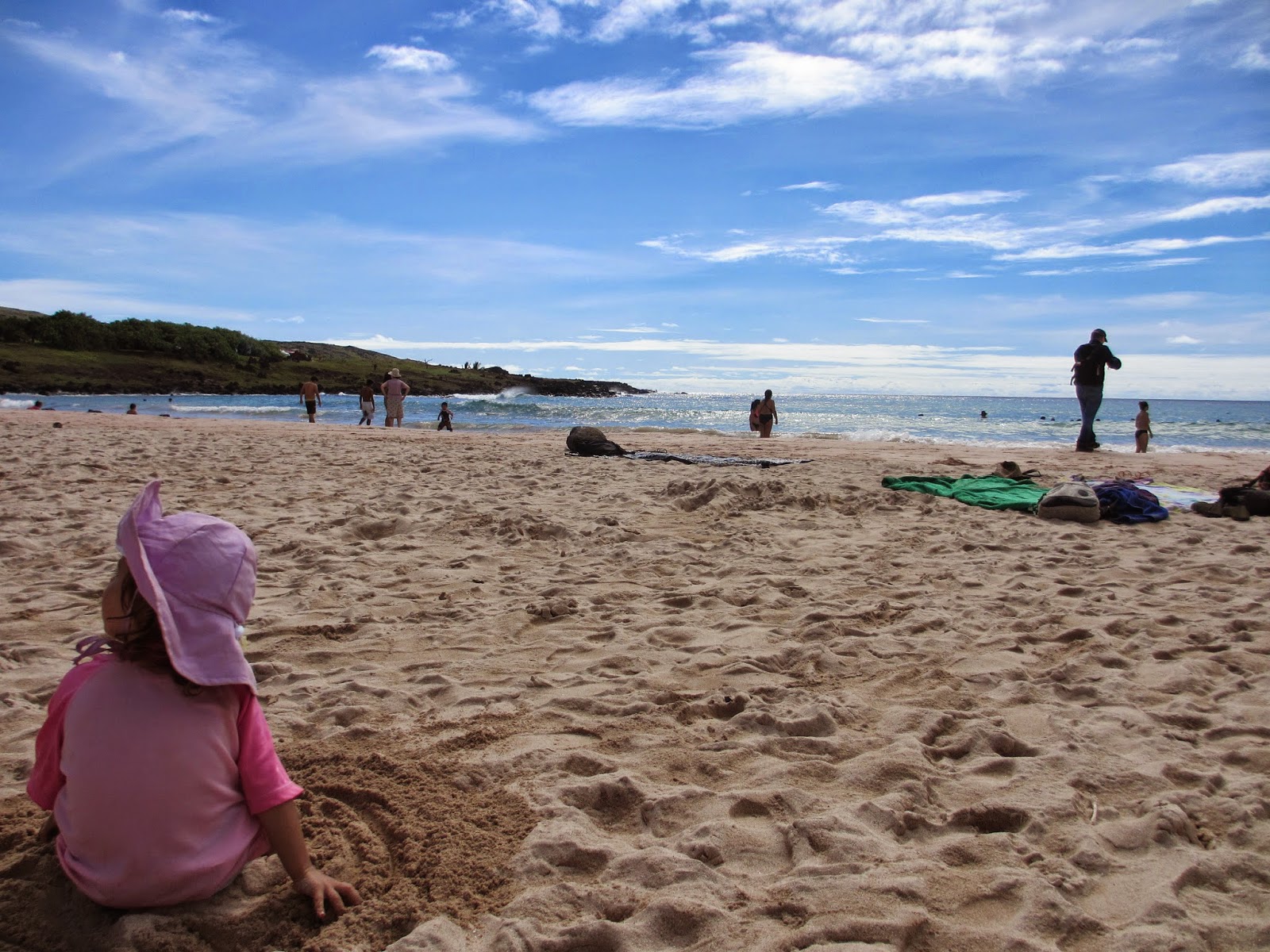Never in a million years did I think I would get to travel to one of the most remote islands in the world. Literally thousands of miles from civilization. Easter Island is one of those places I always saw pictures of (you know the place, think big stone heads) but was still a mystery to me. I had no idea it was even a part of Chile. Well, a few weekends ago we were lucky enough to venture westward over the Pacific to this beautiful island of the Rapa Nui.
Brief History
Isla de Pascua was settled thousands of years ago by a group of Polynesians known as the Rapa Nui. The Rapa Nui have since inhabited the island, but their population has vastly decreased to about 3,500 (from about 10,000, but who really knows). There are many theories about what has happened on Easter Island, from famine to disease to rats. The iconic Easter Island heads are called "Moai" (pronounced "Moe-eye") and were sculpted out of volcanic rock (there are 1,000 volcanoes on Easter Island which is about 60 square miles). The Moai are all varying sizes (up to 20 meters) and are sculptures of specific ancestors, or as they call them, "abuelos" (grandparents). Our guide said it was their way of keeping photos. The island fell into the hands of the Chileans in the late 1800s, but wasn't "touristy" until about the 1970s when most of the island became a national park to preserve the Rapa Nui's history. However, as the common tale goes, the native people (in this case the Rapa Nui), have major issues with their sovereign nation (in this case the Chileans). In fact, a couple weeks before we got there, the Rapa Nui took control of the island and "closed" down the entrances to the parks. They basically put up road blocks not letting anyone pass. We were worried this would impact our trip, but as it turned out, it was a very interesting time to be there and learn about the Rapa Nui demands and culture.
Briefly, the island is small, and the Rapa Nui are seeing their culture and people mixing more and more with the Chileans, which means it is getting more difficult to preserve their way of life. Also, there are only so many natural resources on the island, and Chileans are coming to live there with few restrictions. Not to mention tourism is their main source of income, and Chileans have been moving to the island to take advantage of the income. The Rapa Nui are now demanding from the Chilean government more restrictions on those Chileans that can move to Easter Island and for how long.
Our Trip
The flights were long and exactly how you would imagine with a baby and toddler, but it was totally worth it. We rented a very pretty house with our friends (a family of four). It sat on this huge piece of land dotted with mango trees, roosters, hens and chicks (Sadie loved chasing them every chance she got). They welcomed us with leis made of fresh flowers and a huge pitcher of fresh papaya juice and bowl of fruit.
The owners set us up with a Rapa Nui guide, who assured us it would be no problem traveling around the island to the different sites even with all the road blocks along the way. He was an older man, and has lived on the island for over 50 years, so he was well-connected. We would learn later that we lucked out! Everywhere we went he brought the "rebels" a queque (like banana bread) that his wife had made. We always passed through the road blocks no problem. Great guy. Full of knowledge and passion for the Rapa Nui. It was only later that I learned he was a Chilean who had married a Rapa Nui woman decades earlier.
The first day we went to some of the oldest sites on the island and got to see Moai from (what is believed to be) the 2nd century. It was a little rainy that day, but it was actually really refreshing because when the sun came out it was extremely hot.
Next stop was to some gorgeous viewpoints of all the volcanoes around town.
We then visited the only Moai on the island that face towards the sea. They are the guardians and represent the various positions held on the island (e.g., sculptor, warrior, farmer, etc).
We enjoyed some park time right by the ocean.
The next day we visited my favorite place - the quarry. This is where all the Moai were carved out and constructed and then transported to various locations on the island. There are hundreds of Moai here.
Below is the only Moai that is kneeling. It is likely this was carved by a different people than the Rapa Nui, but no one really knows.
Next stop, more Moai! These ones were HUGE and very impressive. Right behind them is the ocean (notice looking inward towards the island).
Last stop of the day was Anakana beach. Just gorgeous. Literally, the clouds parted and it became perfect beach weather.
Our final tour day was more Moai viewing as well as exploring the coast and visiting a huge crater in a volcano that inhabits a whole corner of the island. The picture doesn't look impressive, but it is 200 meters all the way down to the water. It was stunning.
One of my faves.
A fully restored Moai - notice the white eyes and the adornment on top of his head.
Our little explorers :)
Wild horses were everywhere!

















